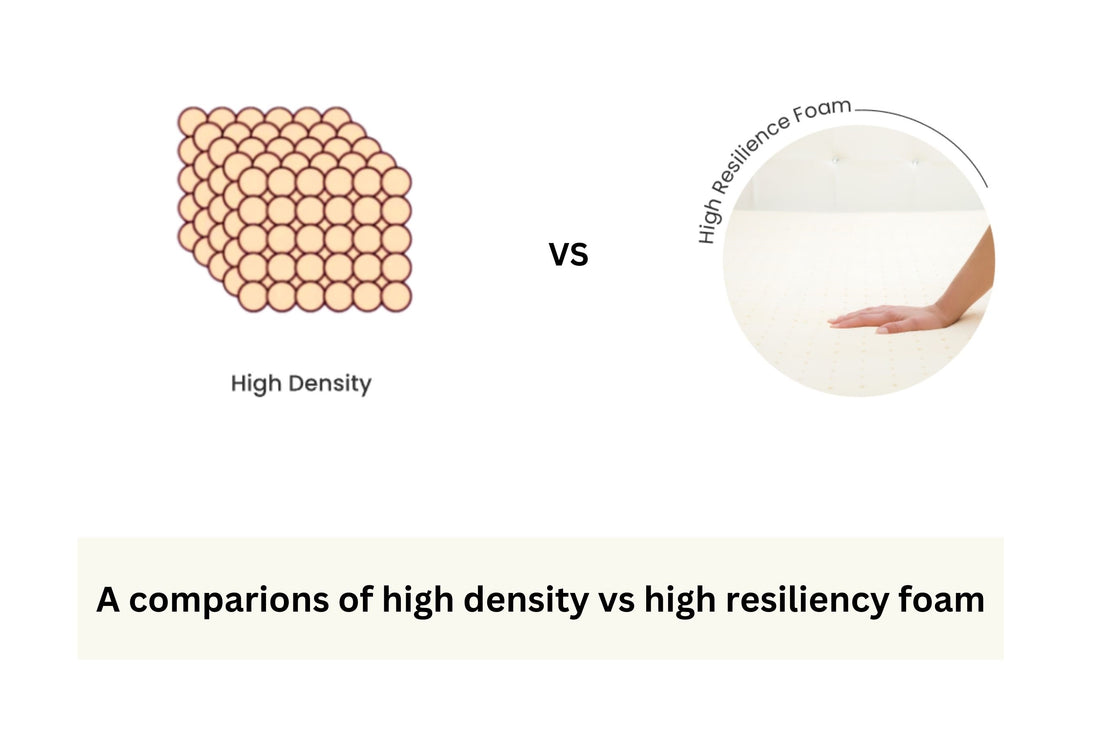What is High Density Foam?
High density foam is a type of foam that is known for its durability and firmness. It is made from polyurethane and has a higher concentration of foam cells per cubic foot compared to other types of foam. We can tell whether a foam is high or lower in density based on the size and number of airpockets a foam has.

High density makes the foam more resistant to wear and tear. As a result, high density foams are ideal for sofas intended for long term use.
Special concern should be noted that this density refers to the concentration of polyethylene used per cubic meter basis. Impurities added can increase the density of the foam but they do not contribute to longer longevity.
What is High Resiliency Foam?
On the other hand, high resiliency foam is a type of foam that is known for its bounce-back ability. It is made from a combination of polyurethane foam and other materials, such as latex or memory foam.
High resiliency foam has a higher level of elasticity, allowing it to quickly regain its shape after being compressed.

To note, a high resiliency foam can also be high density foam as they represent different characteristics of the foam. For example, a high density, high resiliency foam is both tightly packed and able to regain its shape quickly after compression.
Comfort and Support
When it comes to comfort and support, both high density foam and high resiliency foam have their advantages. High density foam provides a firm and supportive feel, making it suitable for individuals who prefer a more firm and stable sitting surface. On the other hand, high resiliency foam offers a softer and more cushioning feel, making it ideal for those who prefer a plush sitting surface.
Durability
In terms of durability, it is directly correlated with the density of the foam. Higher foam cell concentration makes it more resistant to sagging and deformation over time.
For a high resiliency foam that has high density, it is equally durable compared to a foam that is only high in density.
Price
When it comes to price, high density foam is generally more affordable compared to high resiliency foam. This is because high resiliency foam often incorporates additional materials, such as latex or memory foam, which can increase its production cost.
Summary
In conclusion, both high density foam and high resiliency foam have their own unique qualities and benefits. High density foam is known for its durability and firmness, while high resiliency foam offers a softer and more cushioning feel. The choice between the two ultimately depends on personal preferences and specific needs.
If you are looking for a sofa that can last overtime, always insist on sofas made with high density foams.
If you are looking for a sofa that has a medium firm or softer seat feel, consider sofas that incorporate a proportion of high resiliency foams in their seat cushions.
Foams used in our cushions
In our sofas, we only use foams with high density to ensure durability.
In addition, we also incorporate a portion of high resiliency foam as the mid or surface layer of the seat cushion (3 - 5cm thick). The fast rebound characteristic enables our seat cushions to quickly regain their shape after sitting. This also forms our support layer and prevents the seat cushions from feeling too hard to sit on.
For the bottom layer, we use high density foams (10 - 15cm thick) to ensure that (i) customers do not sit through the sofa to feel the sofa frames and (ii) our seat cushions do not sag after 5 years due to regular use.

Browse our sofa selections to choose your favourite sofa.
Last updated: 14th Dec 2023

